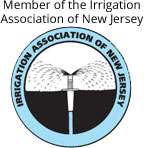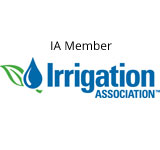Drip irrigation, also known as trickle irrigation or micro irrigation or localized irrigation, is an irrigation method that saves water and fertilizer by allowing water to drip slowly to the roots of plants, either onto the soil surface or directly onto the root zone, through a network of valves, pipes, tubing, and emitters. It is done through narrow tubes that deliver water directly to the base of the plant.
Primitive drip irrigation has been used since ancient times. Fan Sheng-Chih Shu, written in China during the first century BCE, describes the use of buried, unglazed clay pots filled with water as a means of irrigation. Modern drip irrigation began its development in Germany in 1860 when researchers began experimenting with subsurface irrigation using clay pipe to create combination irrigation and drainage systems. Research was later expanded in the 1920s to include the application of perforated pipe systems. The usage of plastic to hold and distribute water in drip irrigation was later developed in Australia by Hannis Thill.
Usage of a plastic emitter in drip irrigation was developed in Isreal by Simcha Blass and his son Yeshayahu. Instead of releasing water through tiny holes, that are blocked easily by tiny particles, water was released through larger and longer passageways by using velocity to slow water inside a plastic emitter. The first experimental system of this type was established in 1959 by Blass who partnered later (1964) with Kibbuta Hatzerim to create an irrigation company called Netafim. Together they developed and patented the first practical surface drip irrigation emitter.
In the United States, the first drip tape, called Dew Hose, was developed by Richard Chapin of Chapin Watermatics in the early 1960s.
Modern drip irrigation has arguably become the world’s most valued innovation in agriculture since the invention of the impact sprinkler in the 1930s, which offered the first practical alternative to surface irrigation. Drip irrigation may also use devices called micro-spray heads, which spray water in a small area, instead of dripping emitters. These are generally used on tree and vine crops with wider root zones. Subsurface drip irrigation (SDI) uses permanently or temporarily buried dripperline or drip tape located at or below the plant roots. It is becoming popular for row crop irrigation, especially in areas where water supplies are limited or recycled water is used for irrigation. Careful study of all the relevant factors like land topography, soil, water, crop and agro-climatic conditions are needed to determine the most suitable drip irrigation system and components to be used in a specific installation.





